Symbolic Silhouettes
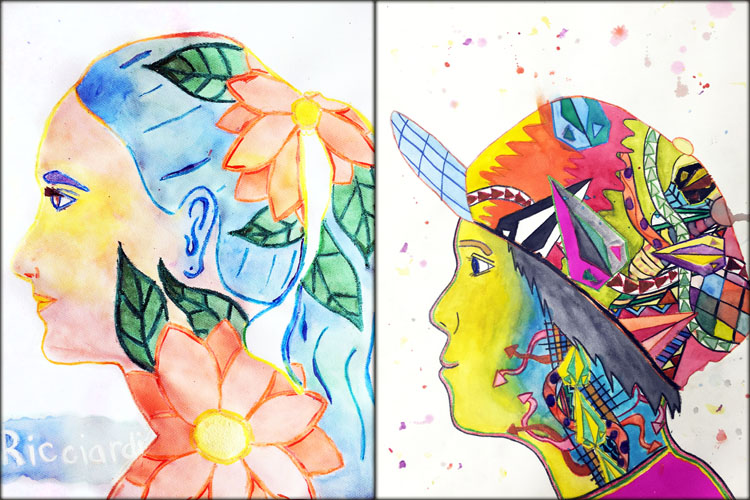
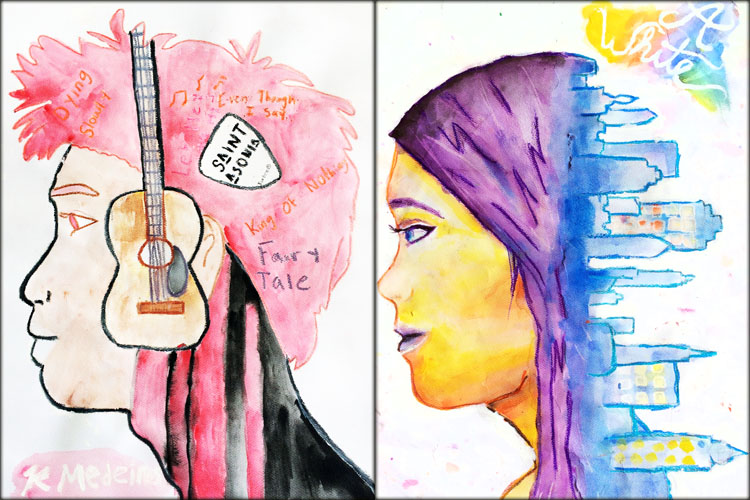
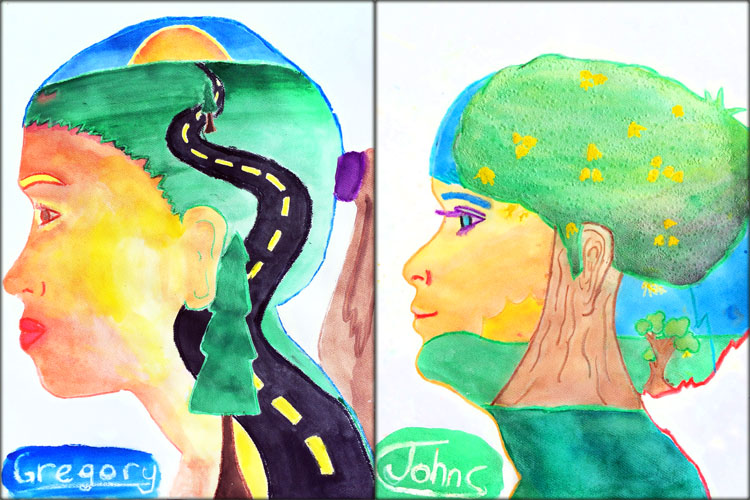
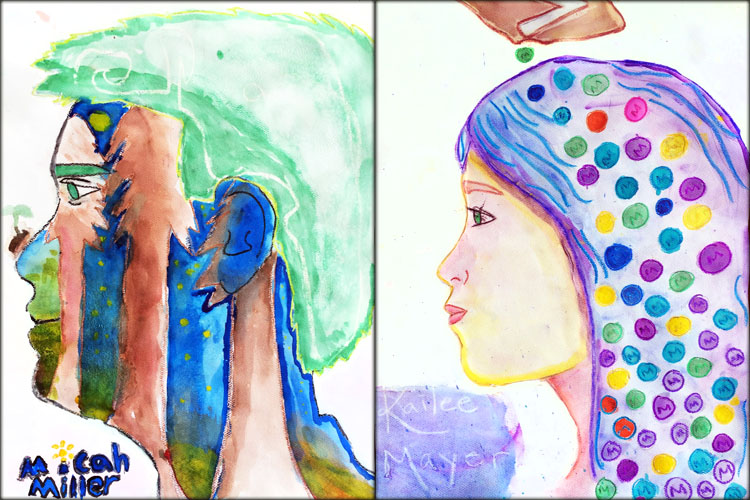
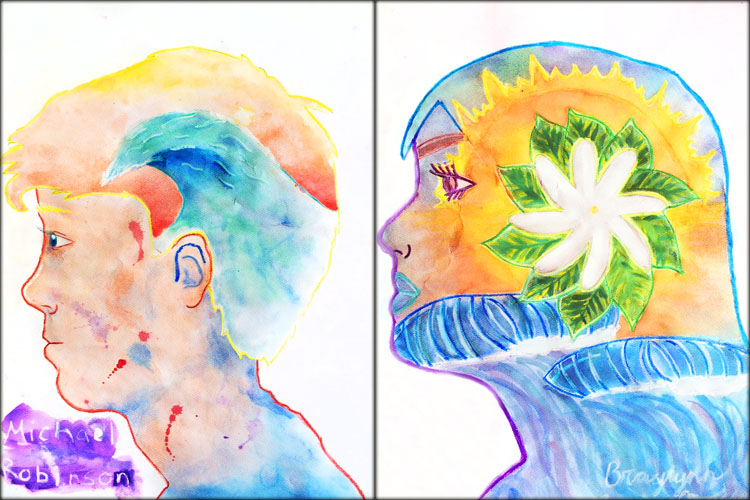
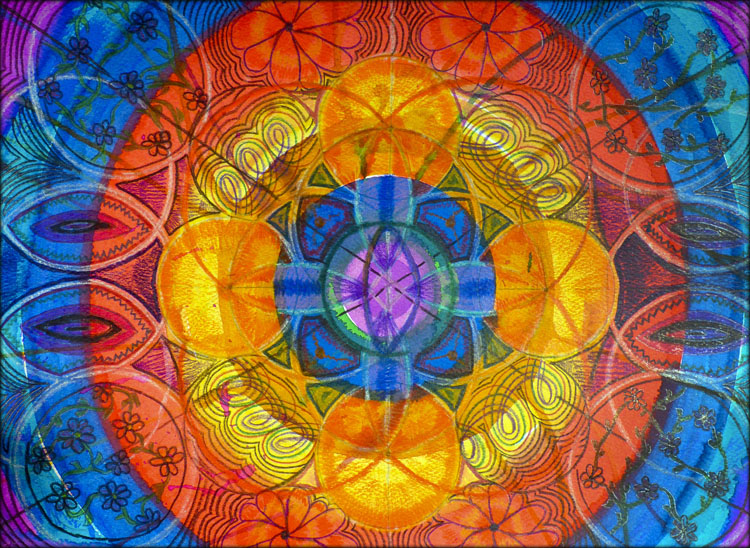
The first project of the 2014-2015 year for Kapa’a Middle School’s art students was to create a mandala design that would also be used for their sketchbook covers. This multimedia lesson served as an introduction to radial symmetry and repetition of line and shape.

The underlying colorful circles were created by brushing liquid watercolor onto a paper spinning on the pottery wheel. Although it isn’t clay, this gave students an opportunity to use their all-time favorite tool!
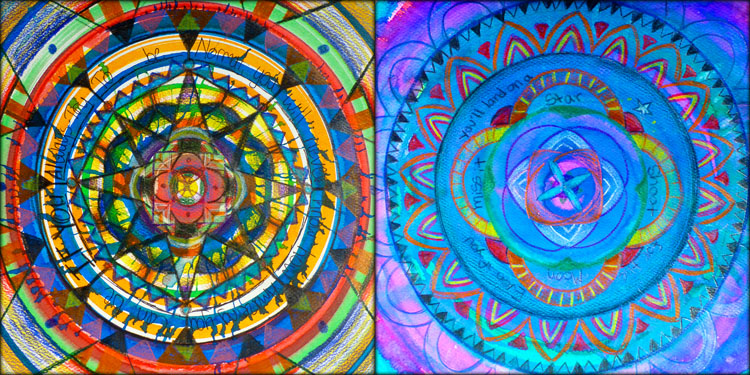
Starting from the center, bands of watercolor were applied until students reached the outer edge of the paper. Students also created interesting streak and drip affects by blowing the wet paint through a straw while the wheel was spinning.

Once the watercolor paint was dry, students used colored pencils to draw a mandala on top of the colorful background. Tools such as rulers, compasses, and circular objects helped to create accurate lines and spacing.
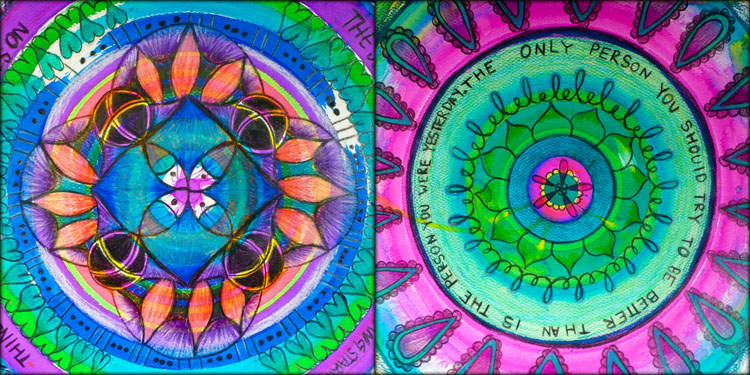
Students also enjoyed learning about the symbolism, history, and cultural practice of mandala creations. They were especially fascinated by Tibetan sand mandalas, and puzzled about why the artists would eventually destroy the intricate design they so painstakingly created.
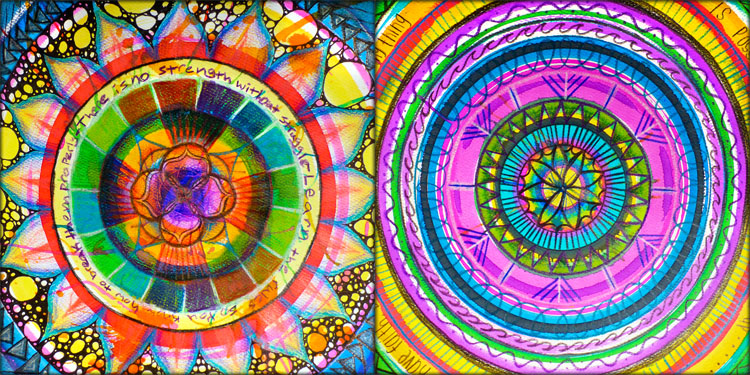
Finally, students incorporated inspirational quotes or affirmations to inspire them every time they look back on their mandala design.
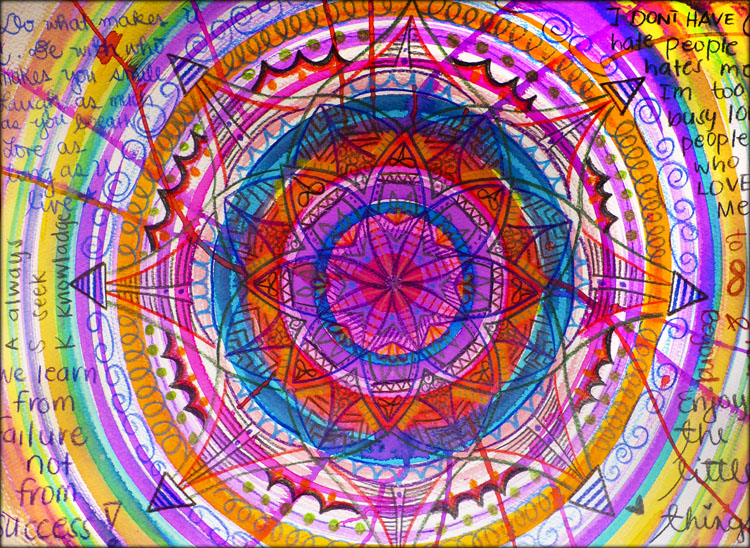

Kapaa Middle School Art students were inspired by a “Water Life” theme for this watercolor painting project. While exploring various watercolor techniques, students also learned about asymmetrically balanced composition and value created through texture.

The idea for this lesson was inspired by a similar project titled “Beyond the Border,” posted by Art teacher Michelle East. Students used the Rule-Of-Thirds to place the focal point of their subject off-center. The main subject extends beyond the inner rectangle onto the border, which is left black and white. The final result is an illusion that part of the image is spilling over the white border that frames it.

Watercolor techniques included wash, value-gradient, color-gradient, glazing, wet-in-wet, salt, isopropyl, splatter, and blowing with a straw. Students practiced the techniques by making a bookmark with all of the techniques labeled for reference.

Finally, crosshatching and stippling were applied with a calligraphy stylus (the kind you dip into an ink-well) to create depth and shadow. Black ink outlines were also added to all contours as well as the defining edge of the frame.

Pictured below are some of the sketchbook activities that went along with this lesson.

Click here for Self-Evaluation and Assessment Rubric

Summertime is my favorite time of year. Months off from school, mango season, beach days, and time for projects are only a few reasons why summer rocks! Aside from a short visit to California, we spent most of the summer vacationing at home and enjoying all that Kauai has to offer!
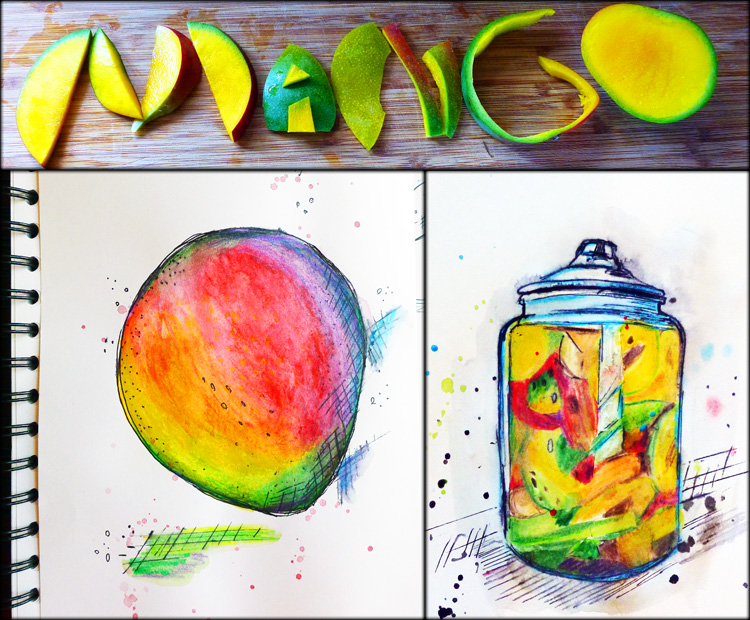
Between multiple house projects and chores, I also found some fun time for simple sketching… It’s been a while since I played around with watercolor pencils.
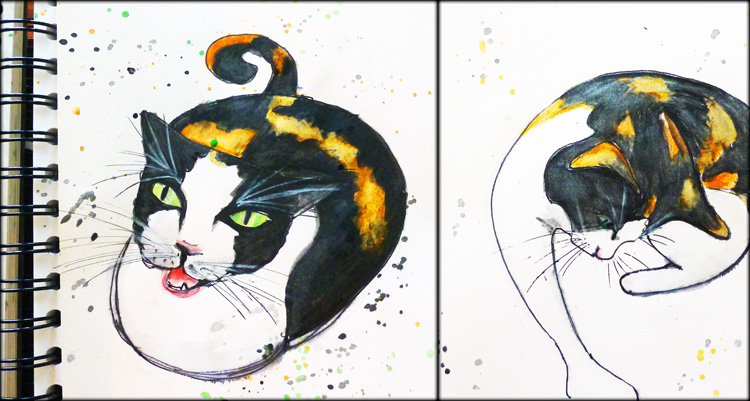
By the looks of it, I was most inspired by delicious fruit this summer! It’s impossible to count the hours I spent collecting, slicing, freezing, dehydrating, and baking mango recipes. Our cat, Callie, also enjoys the extra company around the house and makes sure to get in some extra attention with her cuteness.


Kapaa Middle School Art students recently finished a two-part project featuring skeleton drawings that were cut out and mounted on a watercolor background. As an introduction, we studied the Hispanic holiday of Los Dias De Los Muertos and looked at skeleton artwork by the famous Jose Guatelupe Posada.

Students began with a small printed image of a skeleton and instructions to not only draw the image, but to enlarge it by 4 times! This was accomplished by measuring a grid that enabled them to draw the complex figure in small sections while maintaining the correct proportions.
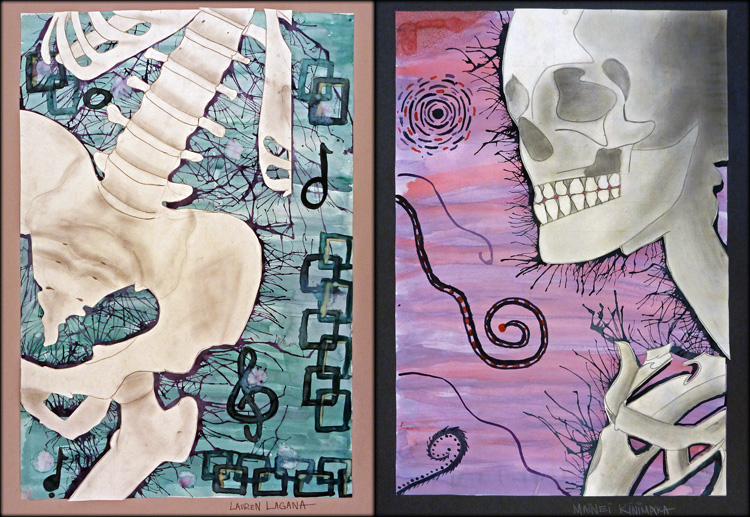
While the process of measuring, drawing, shading and cutting of the bones was painstaking and meticulous, the background allowed students to be more expressive and free-form. Students were introduced to 6 different watercolor painting techniques which they practiced in their sketchbooks. The only requirement for the final background was to incorporate all 6 techniques.
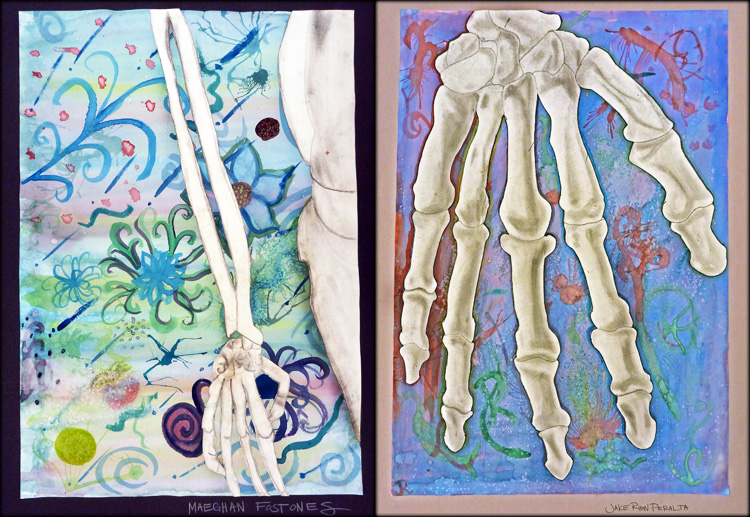
“An artist will sooner and with more certainty, establish the character of skeletons, than the most learned anatomist, whose eye has not been accustomed to seize on every peculiarity.”
– Rembrandt Peale (American Artist & Naturalist)
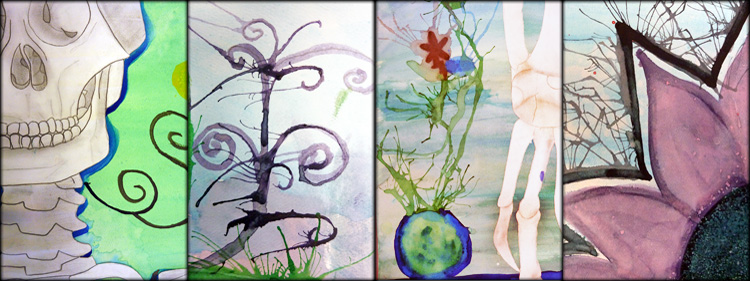
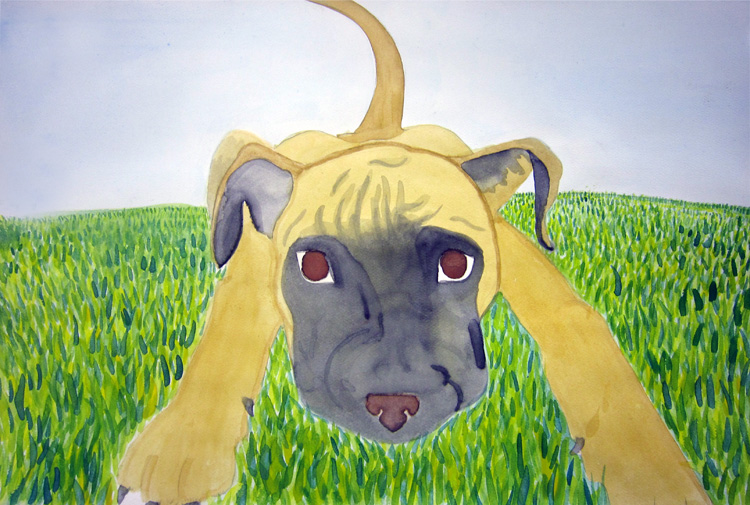
Recess time, passing periods, and any spare classtime minutes were utilized by artist Zuri Shanklin to complete this extra project for the Humane Society’s student art contest. Unfortunately, the extra time wasn’t enough to complete it by the deadline, but this fantastic watercolor painting still deserves an audience. Zuri, your dedication, creativity, and artistic talent are the admirable qualities that will take you to the top!
“The greatness of a nation and its moral progress can be judged by the way its animals are treated…I hold that, the more helpless a creature, the more entitled it is to protection by people from the cruelty of humankind.†Mahatma Gandhi
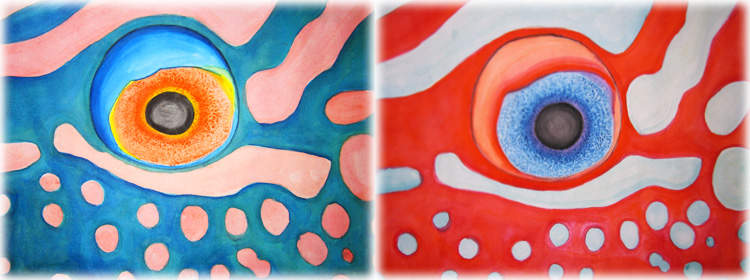
Georgia O’keefe’s large-scale flower paintings were the inspiration for this watercolor painting assignment. Students were assigned to choose a natural subject, and then look very very closely at it. When arranging the composition on paper, the subject should flow off of the edges of the page, with the option of zooming in so close that it becomes almost abstract.
Adding another dimension and level of complexity to the learning process, students were assigned to complete 2 paintings, identical in every aspect with the exception of reversing the colors. In order to accurately select complimentary colors, students had to work closely with the color wheel and their knowledge of color theory.

“Nobody sees a flower – really – it is so small it takes time – we haven’t time – and to see takes time, like to have a friend takes time.” Georgia O’Keefe
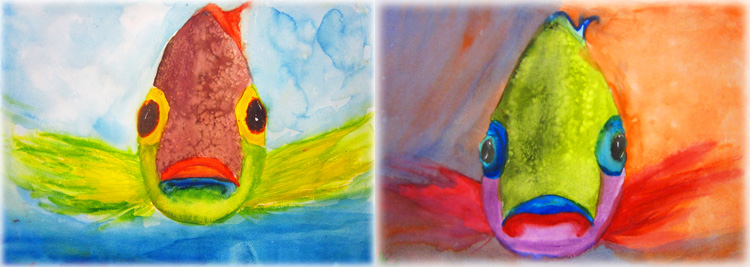

We studied the artwork of Canadian artist Emily Carr for this expressive watercolor assignment. Just as Carr enjoyed plein air painting, the students took their sketchbooks outdoors and found a tree to capture on paper. Although the initial sketches were derived from studying nature, the students used their artistic license of expression when rendering gestural lines and mixing colors.
“There is something bigger than fact: the underlying spirit, all it stands for, the mood, the vastness, the wildness.”
Emily Carr
Art Smart is an after school program that I am teaching for “at risk” 1st and 2nd-graders. I have about 15 kids that gather in my classroom for 2 hours after school, and we do art projects together. Most recently we created cities with water color paints.
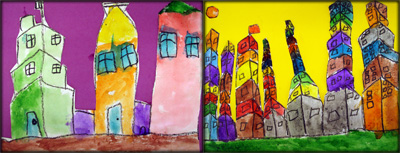
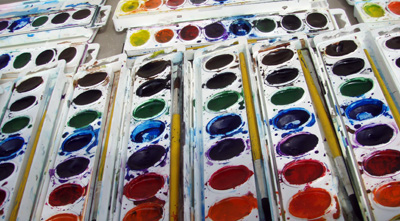
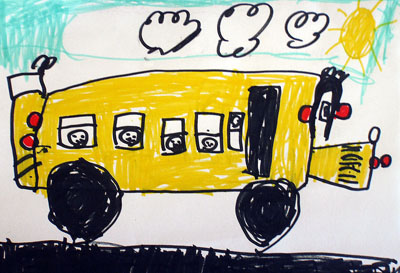
Teaching elementary art is very different than teaching high school Ceramics, and Kindergarten is probably the most challenging for me! There’s always at least one in the group crying for his mommy, half of them take their shoes off and can’t get them back on again, and the average attention span is about 3 minutes. Combine that with a class of 25, one adult (me), and messy paint!

Luckily I have my mom as a resource, and her good advice has rescued me several times already this year. Breaking up the time with books and songs, not to mention the actual art project, seems to work best. We’ve done school bus pictures inspired by Donald Crews SCHOOL BUS, and underwater fish paintings inspired by Marcus Pfister’s Rainbow Fish. Stay tuned for more elementary school art… next time I’ll post some images of 1st-5th grade projects.